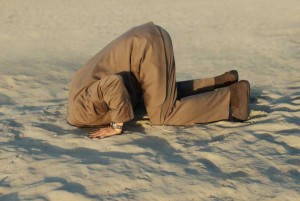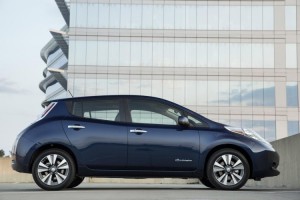With the passage of AB 197 yesterday, it’s easy to assume that the future of cap-and-trade may be gloomy beyond 2020. The program relies on legislative authorization via AB 32, which expires in 2020 (although arguably does not preclude extension beyond 2020). But AB 197 now specifically directs the California Air Resources Board to prioritize:
(a) Emission reduction rules and regulations that result in direct emission reductions at large stationary sources of greenhouse gas emissions sources and direct emission reductions from mobile sources.(b) Emission reduction rules and regulations that result in direct emission reductions from sources other than those specified in subdivision (a).
Ann Carlson at Legal Planet asks the question whether or not this spells the end of cap-and-trade. The answer may be quite complicated and will probably land the agency in court to resolve either way, as Ann discusses:
First, what does it mean to “prioritize” direct emission reductions? Does the language require ARB to impose such reductions? Or only consider them in conjunction with other considerations? What happens, for example, if direct emissions reductions are more expensive than reductions achieved through cap and trade even taking into account the social costs of emissions as required?
If the Air Resources Board leadership is committed to keeping cap-and-trade alive beyond 2020, which it appears they are, then my guess is they have enough wiggle room and deference to do so, once they undertake a proper analysis of the various options on any given issue before them.
But the new language in AB 197 will certainly provide fodder for cap-and-trade critics to take the agency to court over any decisions privileging that program over direct command-and-control approaches. So in that respect, AB 197 only adds further uncertainty to the program after 2020.
The issue does not not need to be solved right away, as cap-and-trade will continue through 2020. But the lingering doubts are apparently undermining the auctions for allowances, leading to low prices and uptake. And industry will not want to continue indefinitely with so much uncertainty in the short term. Hence their motivation to encourage a legislative fix as soon as possible.
2017 should be an interesting year for cap-and-trade.

As I noted earlier today, there was a bit of added drama to the passing of SB 32 yesterday in the California Assembly, as the passage was dependent on the state enacting AB 197. The Assembly debated AB 197 this morning, and it passed out of the natural resources committee with six votes in favor and one opposed. It then headed to the assembly floor where it just passed 44 votes in favor, 28 opposed. The governor has vowed to sign it.
The irony is that the oil and gas industry fought attempts in the legislature to save cap-and-trade with a two-thirds vote. Cap-and-trade is a more palatable market-based alternative for the industry, compared to direct regulation, which AB 197 now prioritizes. So the industry is stuck with a majority-vote command-and-control approach. Perhaps then it’s no surprise that industry representatives argued against AB 197 in committee this morning by saying it would undermine cap-and-trade.
So given the political momentum, my guess is that diverse parties now have an incentive to save cap-and-trade. But in the meantime, California has affirmed its international-leading commitment to stay the course on greenhouse gas reductions through 2030, pending final senate approval of an amended SB 32.
As I blogged yesterday, the California Assembly took a giant step in approving SB 32 (Pavley), with one vote to spare for a majority. But the bill is tied to AB 197, which is up for debate today. That bill restricts some of the California Air Resources Board’s independence to implement the 2030 law by giving the legislature more oversight. It also adds in a requirement that all regulations under SB 32 must include a “social cost” accounting that could make command-and-control regulations more palatable than market-based solutions like cap-and-trade. My colleague Ann Carlson at UCLA Law has more analysis at Legal Planet.
The oil and gas industry has apparently targeted AB 197 as a way to bring down SB 32, plus the state senate will need to reconsider SB 32 given that the assembly amended it after it passed the senate first. So it could be another nail-biter.
But assuming these bills are approved in their current form, the implications for California’s post-2020 plans will become much more clear. First, most of the major climate regulations in place now will be able to continue through 2030, without the uncertainty of relying just on an executive order. The big exception is cap-and-trade. However, with command-and-control regulatory authority in place from SB 32, the oil and gas industry will have an incentive to try to re-authorize cap-and-trade as a more palatable alternative to direct regulation. That could make 2017 a big year for that program in the legislature.
In the end, cap-and-trade is just one means to achieving our state’s climate goals, and there are other ways to get there. Command-and-control may be more effective at guaranteeing actual emissions reductions. The downside is that this approach could entail greater costs for industry than a market-based program. And for environmentalists, these site-specific regulations don’t generate auction proceeds like cap-and-trade, which the state is now relying on to fund a host of programs, from high speed rail to low-income housing near transit.
But all of this speculation is premature, as we wait to see what the legislature does with AB 197. I’ll provide updates as the process moves forward.
It was a rough year in 2015 for SB 32 (Pavley), California’s major climate bill to extend the state’s greenhouse gas reduction efforts to 2030. The bill went down without a vote on the Assembly floor, due to opposition from “moderate” Democrats.
But today, the Assembly passed the bill with 42 votes in favor, 29 opposed:

This majority vote won’t inoculate certain programs under AB 32, like cap-and-trade, from court challenges alleging that they constitute a tax requiring a super-majority vote. But the bill gives the California Air Resources Board authority to implement command-and-control regulations, if market-based alternatives are challenged.
With the senate already passing SB 32, the governor will sign soon, and California’s position as an international leader in reducing greenhouse gas emissions will continue.
UPDATE: SB 32 is tied to the passage of AB 197, which is still up for a vote.
As the Sacramento legislature debates SB 32 to formally extend the state’s greenhouse gas reduction targets to 2030, a big piece of the political puzzle is the cap-and-trade program. Namely, will the Air Resources Board have authority to continue the program beyond 2020?
There are a number of scenarios at play:
- The ideal situation, for boosters of the program, is that the legislature approves SB 32 with a two-thirds majority, which inoculates the program from any court challenges that it’s a “tax” or “fee” that requires a two-thirds vote under voter-approved amendments to the state’s constitution.
- Barring that (which seems unlikely this year but could happen next year if an anti-Trump “wave” sweeps away some of the legislators friendly to the oil and gas industry), the next option is to pass the 2030 goals with cap-and-trade via a majority vote. Arguably, the program is neither a tax or fee and therefore only requires a majority vote to enact. But a court would have to decide that outcome. So more uncertainty would result regardless.
- The third option is to simply carry on as usual under AB 32 authority, which the Air Resources Board is currently doing. As my colleague Cara Horowitz at UCLA Law has described, there is a pretty solid argument that AB 32 provides all the authority that the Air Resources Board needs to continue the program beyond 2020, particularly with Governor Brown’s executive order to that effect. But that approach too will almost certainly require a court to sanction, leading to more uncertainty in the coming years.
The final alternative, from a political standpoint, is to pass SB 32 on a majority vote, giving the Air Resources Board authority to issue command-and-control regulations to limit emissions from the oil and gas sectors. Presumably, the industry would much prefer a market-based approach to command-and-control, which would bring them back to the table with their legislative allies to re-authorize cap-and-trade beyond 2020. But who knows. And there’s also the wild card of the governor placing a 2018 ballot measure before the voters on the issue.
One thing for sure: if the legislature does not resolve the situation soon, it will likely fall to the courts to decide.
California has been reluctantly going it alone with cap-and-trade, ever since the proposed federal version died in the early days of the Obama Administration. While the state has done a good job (in my view) of developing rules that limit market manipulation and failure, the program is not without its flaws.
As state leaders consider extending the program beyond 2020, Severin Bornstein at the Energy Institute at Haas, UC Berkeley, argues, based on a paper he co-wrote, that the program suffers from lack of effectiveness:
Before committing to a post-2020 plan, however, policymakers must understand why the cap-and-trade program thus far has been a disappointment, yielding allowance prices at the administrative price floor and having little impact on total state GHG emissions. California’s price is a little below $13/ton, which translates to about 13 cents per gallon at the gas pump and raises electricity prices by less than one cent per kilowatt-hour.
While policy makers have argued that the low allowance prices just mean that other carbon-fighting programs must be successful, Bornstein begs to differ and offers some important recommendations:
So, can California’s cap-and-trade program be saved? Yes. But it will require moderating the view that there is one single emissions target that the state must hit. Instead, the program should be revised to have a price floor that is substantially higher than the current level, which is so low that it does not significantly change the behavior of emitters. And the program should have a credible price ceiling at a level that won’t trigger a political crisis. The current program has a small buffer of allowances that can be released at high prices, but would have still risked skyrocketing prices if California’s economy had experienced more robust growth.
The program is complicated and not nearly as elegant as a straightforward carbon tax would be. But it’s worth trying to get the details right, in case cap-and-trade can function as a viable alternative for tax-averse jurisdictions who want to decarbonize their economy. In that spirit, I hope Bornstein and his colleagues’ advice is well-taken by state leaders, as they work to improve the program.
 In my continuing quest to understand how to communicate better on climate change, I came across an article [pay-walled from E&E News] with some recent scientific research on the subject:
In my continuing quest to understand how to communicate better on climate change, I came across an article [pay-walled from E&E News] with some recent scientific research on the subject:
To trigger the right emotions, [behavioral psychologist Renee] Lertzman and her colleagues developed a script where they circled around environmentalism without explicitly labeling it as such.
The script discussed nature and the merits of the outdoors. It gave a nod to “creation care,” an idea in Christianity that humans are responsible for this planet. It acknowledged that people might dislike former Vice President Al Gore and policies that seek to expand government. It is possible to address the challenge on “our own terms” through sustainable energy solutions, the script stated.
To judge whether the message resonated with conservatives, Lertzman and her colleagues gave a test audience a dial that they could turn up high if they liked what they were hearing. As the scientists went through the script, both moderate and staunch conservatives cranked up the dial.
The testing proved the script was successful, Lertzman said. She and her colleagues have shared the dial test results with select audiences, including to pro-climate GOP members of Congress who would like to discuss climate with their conservative constituencies.
I’m not going to be comfortable labeling climate mitigation efforts “creation care,” but I do like the idea of discussing climate action as something that local communities can and should do “on their own terms.”
This type of message can resonate in two ways: one, it can address conservatives’ fears that belief in climate science will trigger massive government overreach in regulating our economy. Two, it underscores the need for decentralized action on climate change, which I believe will be a necessity even with a strong federal role in supporting clean technology and putting a price on carbon.
Why local action? Well, two more reasons there. First, the impacts of climate change will be unique to each community. Federal and state government can help with the process, but it will ultimately be a local issue. Coastal cities will have to deal with sea level rise and figure out how to pay for sea walls or abandon some development, while inland areas will have to deal with droughts, fires, twisters, hurricanes, and the litany of other cataclysmic weather that scientists tell us will get worse.
Second, to reduce emissions, each community will need to determine the right mix of strategies and harness the energy generation potential of their geographical area. That means local solutions to reduce driving and encourage walking and biking and more localized energy production, depending on local resources. Those resources could be wave/tidal, geothermal, wind, sun or who knows what else we may invent and harness in the coming years.
I also like the idea of local innovation, to create and test ideas and policies that can spread throughout the world. So unlocking this kind of experimentation is also good for broader policy development.
Hopefully this phrase “our on our terms” can be useful for other climate researchers looking to have more productive discussions about policy options with climate science doubters. It’s going to take much more than just one phrase, but maybe it can get us started on a more productive path. Meanwhile, I look forward to learning more about what scientists can tell us — both on climate change and how to communicate about it.
 A grid based largely on renewable energy will be tough to manage, given the intermittency of solar and wind power. That’s why it’s in California’s interest to expand its grid to cover the greater western United States. With a western market, California can sell cheap surplus renewables to other states and import their renewables when we don’t have enough.
A grid based largely on renewable energy will be tough to manage, given the intermittency of solar and wind power. That’s why it’s in California’s interest to expand its grid to cover the greater western United States. With a western market, California can sell cheap surplus renewables to other states and import their renewables when we don’t have enough.
To that end, California’s grid operator, the California Independent System Operator (CAISO) has proposed expanding to acquire PacifiCorp, a grid operator with transmission assets in five additional western states.
As I’ve discussed before, this expansion is not without controversy. PacifiCorp states are worried about losing sovereignty to a California-heavy expanded grid operator, while environmentalists are worried that the expansion will throw a lifeline to some coal-fired power plants in the PacifiCorp territory.
California officials are also worried that grid expansion could open up avenues for legal challenges and loss of sovereignty over the state’s domestic climate policies, particularly on renewable energy procurement. Specifically, would expansion increase the federal government’s ability to preempt state authority over domestic policies and energy contracts through the Federal Energy Regulatory Commission (FERC)? And would expansion open up California to legal challenges that claim that state policies in an expanded grid violate the commerce clause in the U.S. Constitution?
To evaluate these concerns, CAISO commissioned a legal analysis by UCLA Law’s Ann Carlson and University of Colorado Law’s William Boyd, in consultation with me and my Berkeley Law colleague Dan Farber. That analysis was released publicly yesterday afternoon, and you can read it here [PDF].
Here is what we found, in a nutshell:
The straightforward answers to each of these questions are that the inclusion of PacifiCorp assets in CAISO:
1) would not alter FERC’s jurisdiction and would not displace any existing state authority over environmental matters. CAISO is already subject to FERC jurisdiction and the inclusion of PacifiCorp in CAISO does not change this. FERC does not have jurisdiction over California’s energy and environmental policies and this would not change because of the inclusion of PacifiCorp in CAISO;
2) would not alter the constitutionality of California’s environmental and clean energy laws under the Commerce Clause of the United States Constitution because the policies are already subject to Commerce Clause scrutiny.
To be clear, this memo doesn’t address other potentially thorny issues, such as how the governance structures will be arranged in this future entity and how specific issues like the coal-fired power plant fleet might be treated. But it does provide assurance that expansion will not call into question California’s sovereignty over its clean energy policies, in terms of its constitutionality and ability to operate under federal jurisdiction.
Climate change has become one of the most ideological issues of the day, with beliefs hardened according to political attitudes. But Pope Francis appears to be pulling off the miracle of actually changing people’s minds, per the Christian Science Monitor:
In 2015, on the eve of the release of Pope Francis’s encyclical [on climate change], research showed that Catholics in the United States were divided over global warming. Their differences mirrored the partisan divide found among much of the population, with around 80 percent of Catholic Democrats claiming there is solid evidence that the Earth is warming, and only half of Catholic Republicans claiming the same. Meanwhile, around 60 percent of Catholic Democrats said that global warming is a serious, man-made problem, while just a quarter of Catholic Republicans agreed.
But over the past year, perceptions began to shift. Just 6 months after the release of Laudato Si, the percentage of American Catholics who thought climate change is a moral issue jumped from 34 percent to 42 percent, according to a study conducted by the Yale Program on Climate Change Communication. Meanwhile, a study released by the Institute for Policy Research and Catholic Studies at the Catholic University of America found that Catholic Republicans who read Laudato Si were 10 percent more likely to agree that human activities are responsible for climate change.
So we can add that to the arsenal of strategies for overcoming resistance to the science: get more religious authorities to speak out on climate change.
The issue is rightly framed as a moral one, given how vulnerable communities will be most likely to face the worst impacts of extreme weather wrought by a warming planet.
While Tesla and General Motors have already made public strides towards the seemingly magic 200-mile range electric vehicle for under $40,000, Nissan has been quiet. The bug-like LEAF, the leading electric vehicle on the road, has been out for five years, yet has had no redesign and little improvement, other than the option to buy a slightly bigger battery pack to get 105-mile range.
Per Green Car Reports, now a Nissan engineer has finally come forward to confirm that the next generation LEAF will have a 60 kwh battery pack — enough to achieve a 200-mile plus range. Of course there’s no timetable for when it will be released, but one would hope that it will happen by 2018.
While the delay is frustrating, in a few years there will be at least three EVs that can go 200 miles for less than $40,000: the Tesla Model 3, Chevy Bolt, and new Nissan. By 2030, we could see a dramatically different market for these vehicles, with significant effects on gas consumption, as Forbes reports on a new Wood Mackenzie study:
The U.S. currently uses more than nine million barrels of gasoline a day. According to the report, if electric cars gain more than 35% market shares by 2035, the U.S. could see a cut from nine million to two million barrels used a day.
This outcome is hardly out of the question, and it underscores how critical electric vehicles are to our environmental future. If Nissan can get its 200-mile act together, it will be a major part of the solution.




